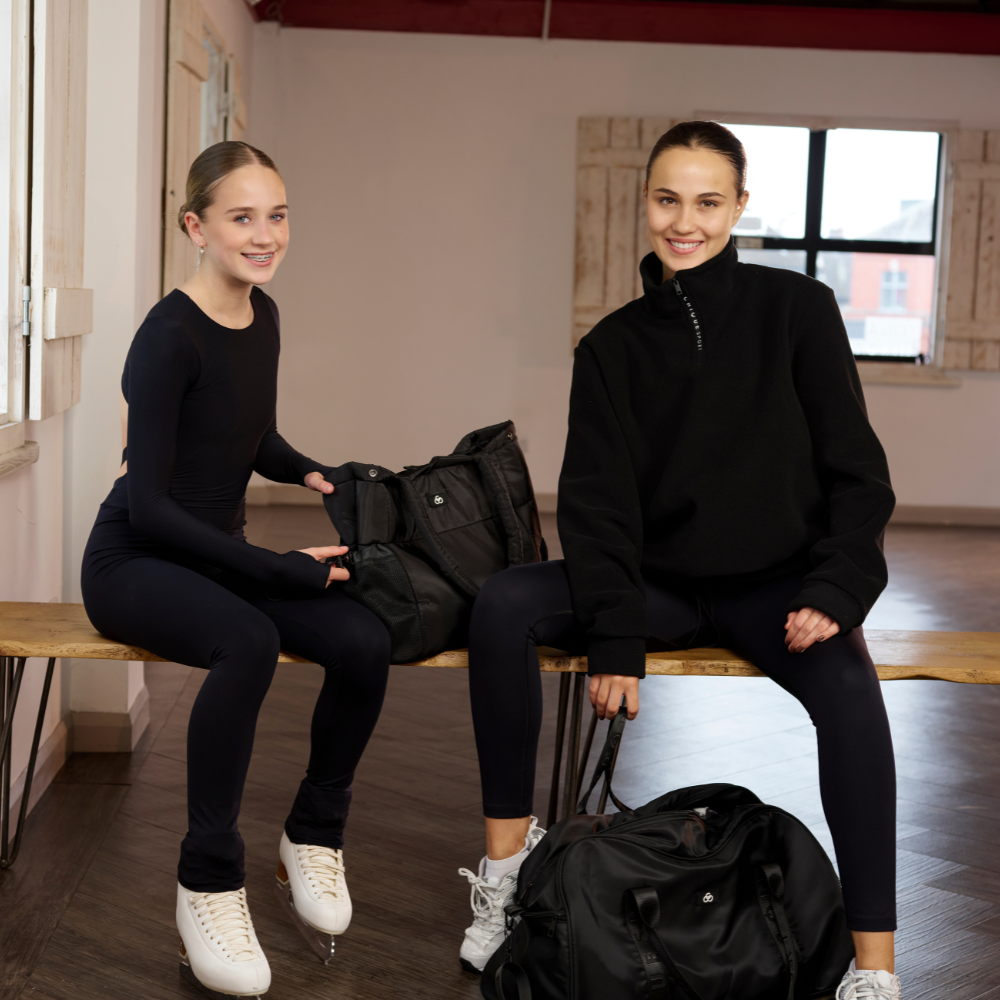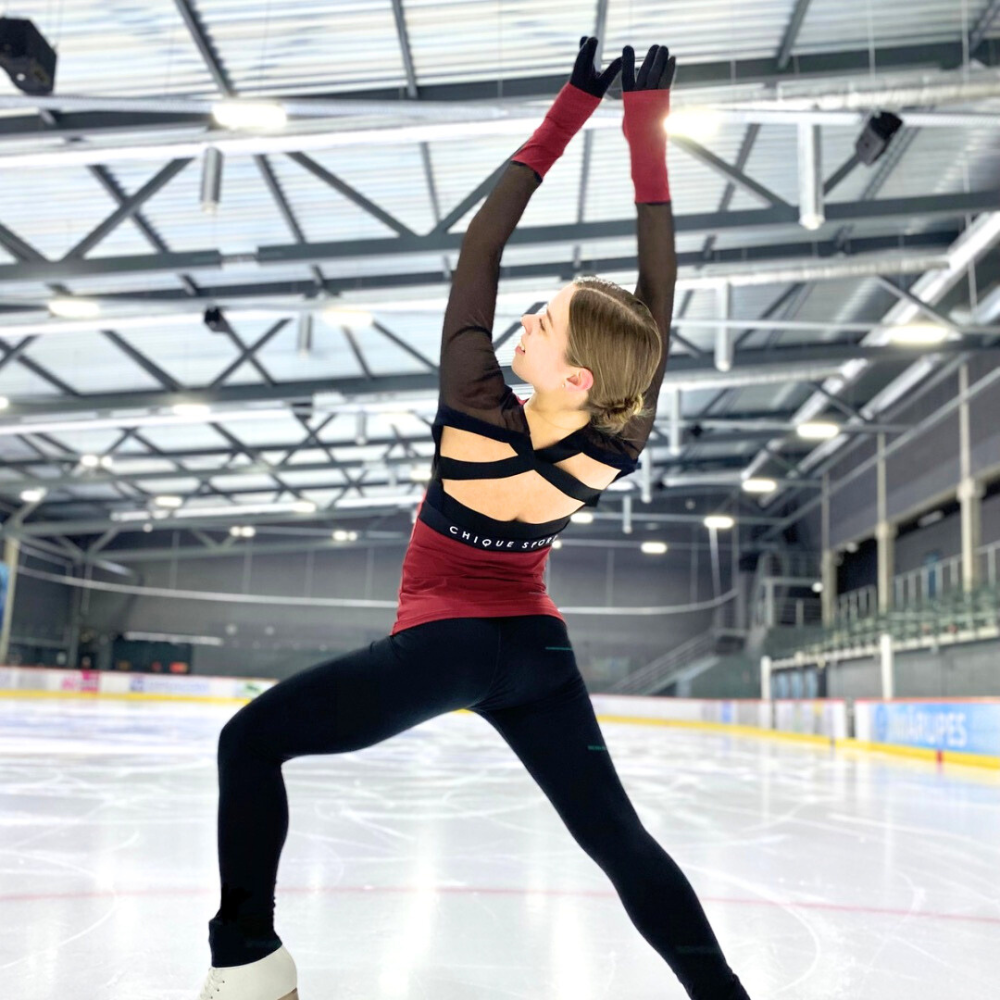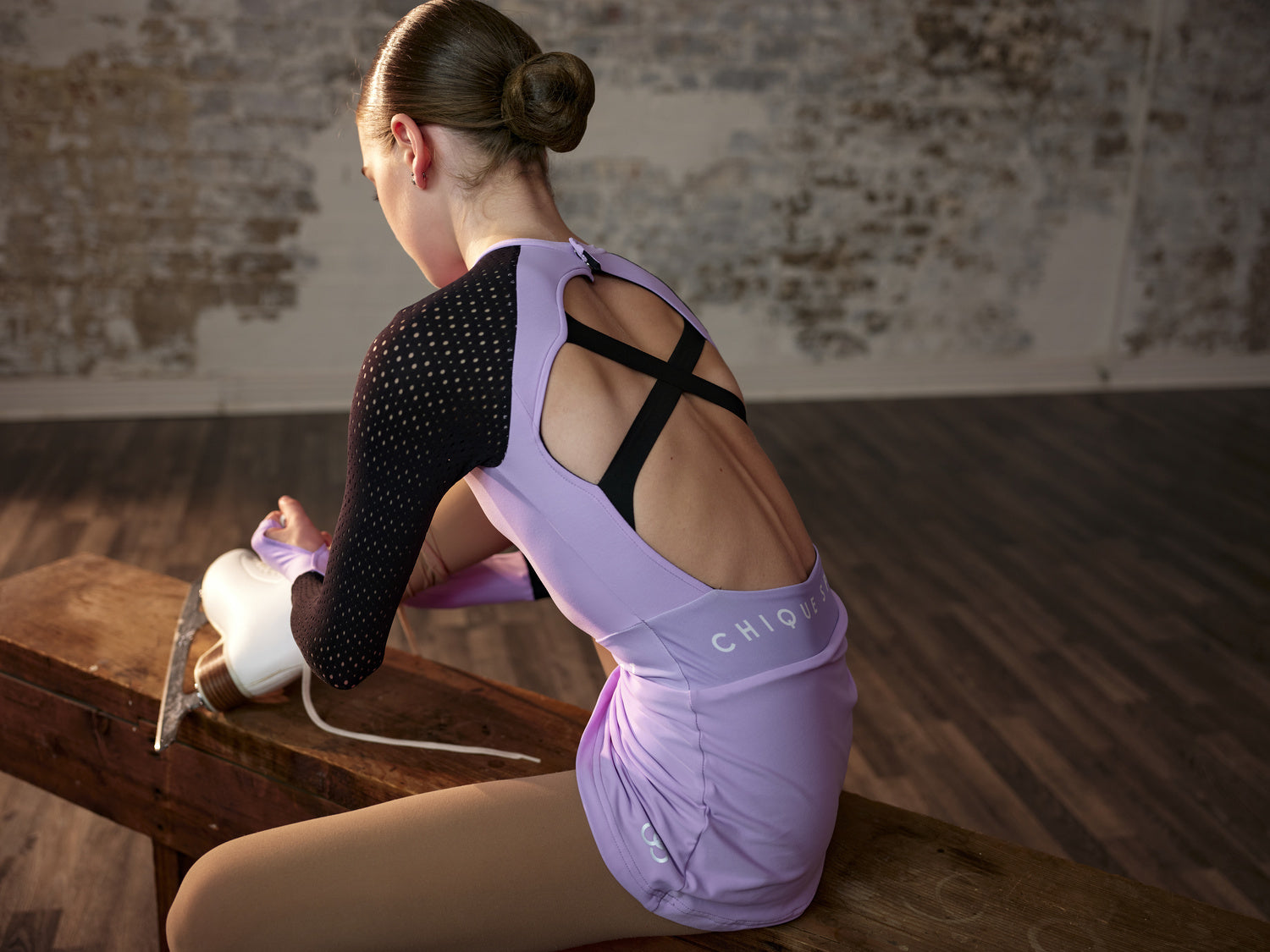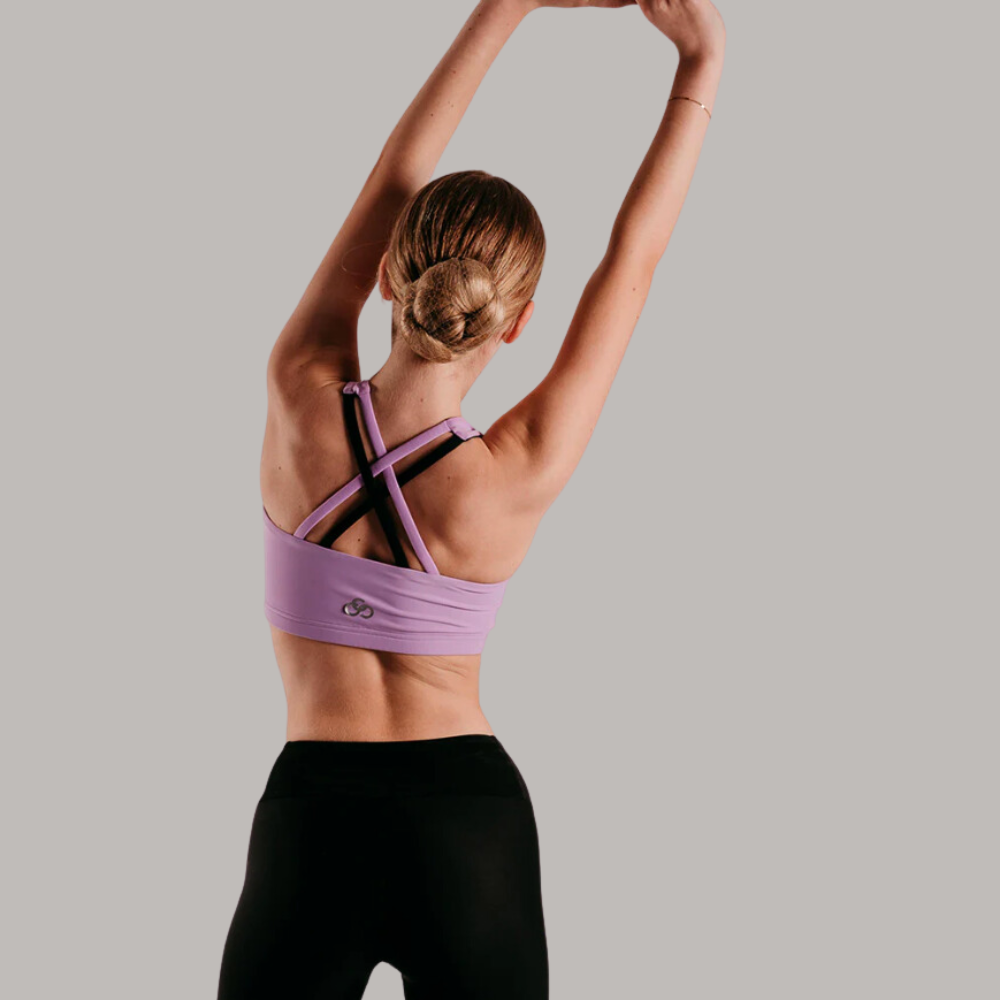Invented by Axel Paulsen back in 1882, the axel jump has been a figure skating staple for over 140 years. It's a must-have move in many advanced routines, especially for those competing at junior and senior levels in ISU events. Whether you're taking on the Axel for the first time or aiming to refine your technique, this guide will provide professional tips to help you succeed on the ice!
What is an Axel Jump in Figure Skating?
In figure skating, the axel jump is a standout move!
It begins differently from other jumps, with the skater taking off from a forward position, instead of the usual backward approach. The axel starts with the skater gliding backward, then stepping forward onto the outside edge of one skate to launch into the air. While in the air, the skater spins before landing backwards.
The Axel jump varies in difficulty based on the number of rotations a skater performs mid-air:
- Single Axel - A Single Axel means the skater does one-and-a-half spins before landing. It's often where skaters start when learning this jump.
- Double Axel - The Double Axel ups the challenge with two-and-a-half spins.
- Triple Axel - Then there's the Triple Axel, a more advanced move with three-and-a-half spins, showing off a skater's skill and control.
- Quad Axel - At the very top level, there's the Quad Axel, with four-and-a-half spins. It's a rare and impressive achievement in the skating world, only managed by a few at the very highest level of the sport.
Why is the Axel Jump so difficult?
The Axel jump, particularly in more advanced forms like the Triple and Quadruple Axel, is regarded as one of the most difficult types of figure skating jumps due to its complex mechanics and the physical demands it places on the skater.
The axel's unique forward take-off requires the skater to add an extra half rotation in the air to complete the full jump. Generating this amount of power requires a lot of strength, meanwhile a smooth landing also requires accurate precision.
Historically, the Axel jump has been a significant milestone in figure skating.
Skaters like Midori Ito, Tonya Harding, and Mirai Nagasu are known for nailing the Triple Axel in competitions. Recently, Yuzuru Hanyu and Ilia Malinin have been pushing limits by attempting the Quad Axel. The Triple Axel remains a rare achievement in women's figure skating, with only a few managing it in competitions. It's not just about pulling off a difficult move; it's also about how skaters keep taking the sport to new heights.
How to Learn the Axel Jump - in 4 Steps
We know how daunting it can be to learn an axel jump, so we’ve broken down the process in a step-by-step format to make it easier to attempt!
- The Lead-Up: Start by generating enough momentum. Skate forward, turn into a forward-facing position, and use the appropriate edge of your skate depending on your jump's direction.
- The Take-Off: Bend your knee deeply on the leg you're standing on. The other leg extends backward for balance. Push off strongly from your standing leg while swinging the trailing leg and arms, initiating the rotation.
- The Jump: Once airborne, draw in your arms and cross your legs tightly. This position is crucial for achieving the necessary rotations while in the air.
- The Landing: Focus on landing on the outside edge of your opposite foot. Extend your arms and the leg you took off from, which helps in maintaining balance and achieving a graceful, controlled landing.
Professional Tips for Mastering the Axel Jump
Our Axel Jump Tips are specially curated by professionals in the figure skating world, including Chique Sport’s Founder, Jenna McCorkell. Based personal and professional skating experience, use these tips to help you perfect your Axel jump:
Organise Off-Ice Practice
Organising off-ice practice is crucial for mastering the Axel Jump as it helps build the necessary physical strength, muscle memory, and coordination in a safer environment. Here are some tips for off-ice practice:
- Practice Strength Training: Focus on exercises that build leg strength and core stability, such as squats, lunges, and planks, as these muscles are essential for the take-off and landing of the Axel.
- Use Jump Drills: Practice the take-off and landing mechanics off the ice. Use a trampoline or a soft mat to simulate the Axel jump, paying attention to the leg and arm movements.
Dissect Each Stage
Dissecting each stage of the Axel Jump can be a strategic way to master this difficult move. By breaking down the axel into components, skaters can focus on perfecting each element and identify areas for improvement. Here’s our top tips for dissecting the axel:- Focus on the Take-Off: Pay close attention to the take-off mechanics, practising the correct posture and edge use. This is crucial for a powerful and controlled launch.
- Refine the In-Air Rotation: Work on the precision and tightness of your in-air spins. Practising rotation techniques off-ice can greatly improve your air position and rotation speed.
Improve Flexibility & Balance
Improving flexibility and balance are also crucial for mastering the Axel Jump. While flexibility helps achieve required body positions during the jump, good balance is essential for a stable take- off and landing. Try these tactics to improve balance and flexibility:
- Stretch Regularly: Incorporate a routine of dynamic and static stretches to improve overall flexibility. Focus on leg, hip, and core areas to enhance the range of motion needed for the Axel.
- Try Yoga or Pilates: Consider adding yoga or Pilates to your training regimen. These disciplines are excellent for developing both flexibility and balance, providing a strong foundation for executing the Axel Jump.
Maximise Jump Height
Maximising jump height is key to successfully performing the Axel Jump, as it provides the necessary airtime for completing the rotations. These exercises are great for improving your axel jump:- Plyometric Exercises: Incorporate plyometric training into your routine, such as squat jumps and box jumps. These exercises build explosive strength, crucial for achieving greater height in your jumps.
- Leg Strengthening: Focus on exercises that strengthen the leg muscles, like lunges and calf raises. Stronger legs can generate more power during the take-off, leading to a higher jump.
Capitalise on Equipment
Using the right figure skating equipment is essential in mastering the Axel Jump, as it directly influences performance and safety on the ice. Therefore it's very important to:- Choose the Right Skates: Ensure your skates provide the necessary support and fit well. Properly fitting skates improve control during take-off and stability during landings.
- Regular Blade Maintenance: Keep your blades sharp and well-maintained. Sharp blades provide better grip on the ice, crucial for the take-off and landing phases of the Axel Jump.
Study Top Performers & Visualise
Studying top performers and visualisation are powerful techniques for mastering the Axel Jump. Observing skilled skaters offers insights into successful execution strategies, while visualisation helps in mentally rehearsing and refining the jump, enhancing muscle memory and boosting confidence.
- Analyse and Learn: Watch videos of top skaters performing Axel Jumps, for example Yuzuru Hanyu, Nathan Chen or Midori Ito. Pay attention to their technique, timing, and form and try to incorporate their techniques into your practice.
- Mental Rehearsal: Regularly visualise yourself performing the Axel Jump perfectly. This mental exercise helps in internalising the movements and can significantly improve actual performance on the ice.
Axel Jump FAQs
How long does it take to learn an Axel Jump?
The time it takes to learn an Axel Jump varies depending on the individual's skill level, physical fitness, and training frequency. Some skaters might learn it in a few months, while others could take a year or more.
How many degrees is an Axel Jump?
An Axel Jump involves 1.5 rotations (540 degrees) for a Single Axel, with each additional rotation adding 360 degrees. For example, a Double Axel is 2.5 rotations (900 degrees).
Why is it hard for women figure skaters to land a Triple Axel Jump?
Landing a Triple Axel is particularly challenging for women due to the combination of required physical strength, precise technique, and higher rotational speed. Women generally have less muscle mass than men, making the jump's physical demands more challenging.
Perform an Axel Jump in Style!

At Chique Sport, we're all about combining skating style with skating performance. We believe that feeling confident and comfortable in what you wear is a game changer, especially when you're tackling challenging moves like the Axel jump. Our training gear is designed to give you that extra boost of confidence and comfort, so you can focus on nailing your technique and shining on the ice.
Check out our range of figure skating clothes and accessories:
Browse the Range






